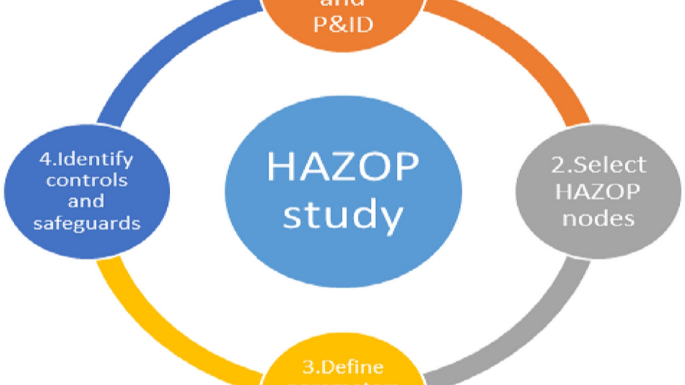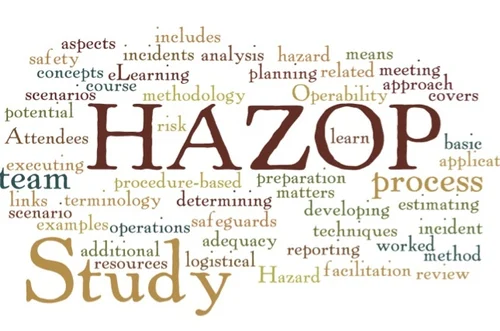HAZOP Study: A Step-by-Step Guide to Identifying Workplace Hazards

Workplace safety is a critical aspect of any industry, particularly in high-risk sectors like chemical processing, oil and gas, and manufacturing. Identifying potential hazards before they lead to incidents is essential for preventing accidents and ensuring compliance with safety regulations. One of the most effective methodologies used for hazard identification is the HAZOP Study.
A Hazard and Operability (HAZOP) Study is a structured and systematic technique used to evaluate processes and identify potential hazards associated with operational deviations. It is widely recognized as a fundamental approach in process safety management and risk assessment. This guide explains the step-by-step process of conducting a HAZOP Study and highlights its importance in ensuring workplace safety.
What is a HAZOP Study and Why is it Important?
A HAZOP Study is a qualitative risk assessment method used to systematically examine complex industrial processes for potential hazards. The goal is to analyze deviations from the intended design that could result in unsafe conditions, operational inefficiencies, or environmental damage.
Key Objectives of a HAZOP Study
- Identify Potential Hazards – Recognize deviations that could cause harm to personnel, equipment, or the environment.
- Analyze Operational Risks – Assess process deviations that may lead to inefficiencies or unsafe working conditions.
- Ensure Compliance – Help industries comply with regulatory requirements and industry standards.
- Improve Process Safety – Reduce the risk of failures that can lead to accidents, downtime, and financial losses.
The HAZOP Study is a crucial component of Process Safety Management, ensuring that industrial operations are designed and maintained with the highest safety standards.
Step-by-Step Process of Conducting a HAZOP Study
Step 1: Define the Scope and Objectives
Before starting a HAZOP Study, it is essential to determine:
- The boundaries of the study (specific processes, equipment, or systems to be analyzed).
- The level of detail required (entire system vs. specific sub-sections).
- The primary goals (hazard identification, risk mitigation, or process optimization).
A clear definition of scope ensures that the study remains focused and addresses all potential risks effectively.
Step 2: Assemble a Multidisciplinary Team
A successful HAZOP Study requires input from various experts, including:
- Process Engineers – Provide insights into process design and operation.
- Operators – Offer practical knowledge of day-to-day operations.
- Maintenance Personnel – Identify potential equipment failures.
- Safety Experts – Ensure compliance with industry regulations.
- Project Managers – Facilitate decision-making and implementation of recommendations.
Having a diverse team ensures a comprehensive evaluation of all possible risks and deviations.
Step 3: Break the Process into Nodes
To systematically analyze the system, it is divided into manageable sections, known as nodes. Each node represents a specific part of the process (e.g., pipelines, reactors, pumps).
By segmenting the system, the team can focus on specific hazards and deviations without overlooking critical areas.
Step 4: Apply Guide Words to Identify Deviations
Guide words are used to identify potential deviations from the intended process conditions. These words help structure the analysis by focusing on different failure scenarios.
| Guide Word | Meaning | Example of Deviation |
|---|---|---|
| No | Complete absence of an element | No flow in a pipeline |
| More | Higher than expected parameter | Excessive temperature in a reactor |
| Less | Lower than expected parameter | Insufficient pressure in a vessel |
| As Well As | Additional components present | Contamination in a chemical process |
| Reverse | Opposite action occurring | Reversed flow due to pump failure |
Applying guide words helps the team systematically examine potential risks associated with process deviations.
Step 5: Identify Causes and Consequences
For each identified deviation, the team determines:
- Possible Causes – Equipment malfunctions, operator errors, external factors.
- Potential Consequences – Environmental damage, production losses, injuries, or fatalities.
- Likelihood and Severity – Evaluating the probability and impact of the deviation.
This step provides critical insights into the severity of hazards and the need for corrective measures.
Step 6: Recommend Safeguards and Corrective Actions
Once risks are identified, appropriate control measures must be recommended. These include:
✅ Engineering Controls – Installing automatic shut-off valves, alarms, or pressure relief systems.
✅ Administrative Controls – Implementing safety procedures, training programs, and standard operating procedures.
✅ Personal Protective Equipment (PPE) – Ensuring workers use protective gear to minimize exposure to hazards.
Integrating effective mitigation strategies enhances overall workplace safety and operational efficiency.
Step 7: Document Findings and Implement Changes
A comprehensive HAZOP Study report must be compiled, including:
- Detailed hazard analysis for each deviation.
- Recommended corrective actions with a timeline for implementation.
- Responsibilities assigned to relevant personnel for monitoring compliance.
Regular Safety Audits ensure that recommendations are effectively implemented and followed over time.
Common Challenges in HAZOP Studies and How to Overcome Them
While HAZOP Studies are highly effective, certain challenges can arise:
- Lack of Team Engagement – Ensuring all stakeholders actively participate improves the quality of risk assessments.
- Time Constraints – Allocating sufficient time for a detailed evaluation prevents overlooked hazards.
- Incomplete Documentation – Keeping thorough records ensures that findings are actionable and traceable.
- Failure to Implement Recommendations – Regular follow-ups ensure that suggested measures are integrated into daily operations.
By addressing these challenges, industries can maximize the benefits of HAZOP Studies for long-term workplace safety improvements.
The Role of Fire Audits and Safety Consultants in Risk Management
In addition to HAZOP Studies, industries must conduct Fire Audits to assess fire hazards and ensure compliance with fire safety regulations. Fire audits help organizations:
🔥 Identify potential fire risks in the workplace.
🔥 Implement fire prevention strategies.
🔥 Ensure compliance with fire safety regulations.
Moreover, engaging a Safety Consultant provides expert guidance in assessing risks, developing safety programs, and ensuring compliance with industry standards. Safety consultants play a vital role in minimizing workplace hazards and ensuring regulatory adherence.
Conclusion: Why HAZOP Study is Essential for Industrial Safety
The HAZOP Study is a crucial tool for identifying workplace hazards, preventing operational failures, and enhancing overall safety. By following a structured approach, industries can minimize risks, protect workers, and improve process efficiency.
When integrated with safety audits, fire audits, and process safety management, organizations can establish a proactive safety culture that ensures compliance with regulations and safeguards human lives.
Regular assessments, expert consultation, and adherence to best safety practices will ensure that workplace operations remain safe, efficient, and compliant.







